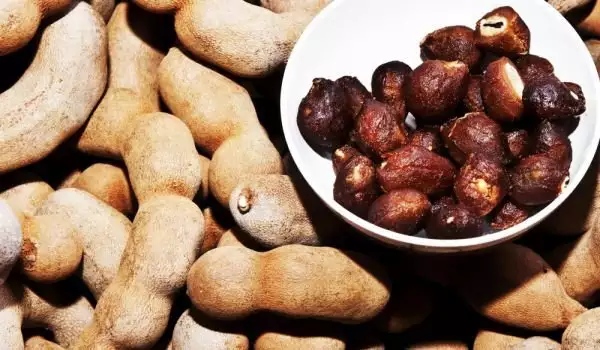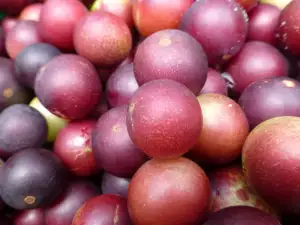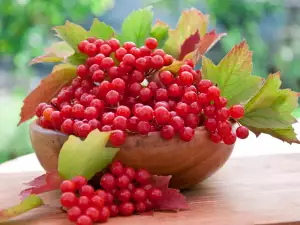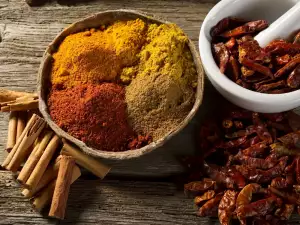Tamarind (Tamarindus Indica) is a tropical evergreen tree or shrub, reaching up to 59 ft (18 m) tall. The name comes from Arabic, meaning "Indian date".
Tamarind is indigenous to north Africa and Asia but is most widespread in India, where it has long been used as a food and spice.
The flowers of tamarind are yellow with red lines. The pod is about 4 3/4″ (12 cm) long, containing small seeds with a sweet and sour inside which becomes quite sour after drying. The skin of the fruit is dark brown, its shape similar to a gondola, irregular and creased.
Tamarind blooms in clusters on the tree, with the harvest in Thailand collected from October to February.
The wood of the tree is very strong and long-lasting which is why it is used to manufacture furniture. Interestingly, even the spikes have an application - after a child is born, the locals stick them in the cracks of the walls to protect the mother and newborn from evil spirits.
Composition of Tamarind
3.5 oz of tamarind contain 245 cal, 36 carbohydrates, 7 g of fat, vitamin A, organic acids.
Choosing and Storing Tamarind
When buying tamarind, you have to pick out fruits that are firm to the touch, with a smooth and uniform skin, not wrinkled and lacking color.
Tamarind fruits can be cut lengthwise using a knife. Take out the fruity fresh and remove the seeds. Store tamarind in the refrigerator for up to a month.

Cooking Tamarind
In Thailand you can find 2 main types of tamarind - sweet, which serves as an excellent basis for desserts and green, which is eaten with a sweet sauce and cayenne pepper.
The Thai people eat the slightly bitter leaves of tamarind, adding them to salads or spicy soups. Tamarind flowers can also be eaten - fresh or cooked. They too are bitter but are perfect for making spicy soups and chili sauce.
The young fruits of tamarind can be served with salt, sugar or dried pepper. They make sweets or concentrated juice from the ripened fruits.
In Western cuisine, tamarind is one of the ingredients of many popular sauces. The fruits can be added to sweets, ice cream, baked goods, bonbons. Tamarind can be used to abate the flavor of sweet and spicy dishes. It can be dried and used to flavor soups and desserts or be made into a puree.
Tamarind seeds are very rich in proteins, they can be baked, soaked in water or boiled - the result is an excellent coffee substitute.
In India, tamarind is added to the traditional lentil soup, other kinds of vegetable soups and certain chutneys. The combination of tamarind, sugar and spices is added to dishes to give them a sweet-bitter aftertaste.
Tamarind can be added as a garnish to rice and bean dishes. It is used in curry dishes, in the popular Italian cream mascarpone.
Benefits of Tamarind
Tamarind is incredibly healthy due to its high content of vitamin A and organic acids. The bark of the tree is used to make a tea that lowers blood pressure. The fruits are used to make laxatives, while the baked seeds of the fruit are used to treat stomach ailments.
Tamarind has an incredibly good antibacterial action, it alleviates cough and fever symptoms. It helps against asthma, urinate tract disorders and arthritis.
It lowers the levels of bad cholesterol in the blood. Thanks to its beneficiary effect on digestion, tamarind is included in diet plans as well.
















Comments